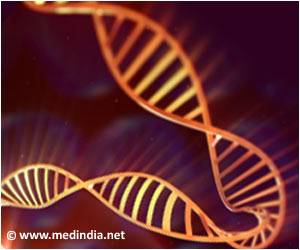A recent study finds a new way that cancer cells may use the cell-surface molecule HER3 to drive tumor progression following treatment with HER1 and HER2 inhibitors.

Although the scientific basis for HER3's association with reduced patient survival was previously unclear, this study shows that HER3 could be up to 10 times more effective than HER2 in recruiting accessory proteins that drive the rapid proliferation, enhanced survival and distant spread of cancers.
The finding, published Sept. 4 in the journal PLOS ONE, came from one of the advanced binary-protein interactions to date. Researchers from the University of Chicago identified more than 1,000 new interactions for the four members of the HER family of growth-factor receptors, with the largest number of new additions linked to HER3.
"Our high-throughput system for measuring interactions between proteins found nearly 1,200 completely new interactions," said study author Richard B. Jones, PhD, assistant professor in the Ben May Department for Cancer Research and the Institute for Genomics and Systems Biology at the University of Chicago. "Most of them were comparatively weak interactions relative to those previously known, but they were still bona fide, tested and confirmed biochemical interactions."
HER2 has long been a poster child for translational research, a laboratory discovery that led to the drug Herceptin (trastuzumab), which worked wonders in clinical trials. Herceptin increased survival for women with aggressive breast cancers by 33 percent. An editorial in the New England Journal of Medicine described the results as "simply stunning … not evolutionary but revolutionary."
Amplification, or over-expression, of HER2 occurs in approximately 30 percent of breast cancer cases. It is associated with more aggressive disease, worse prognosis and increased recurrence. Although Herceptin typically extends life considerably, many patients eventually develop resistance to the drug, so alternative treatments are needed, and HER3 may represent a prime target.
Advertisement
"HER3 is better than even HER2 at recruiting the accessory players in cancer, such as SRC, and breast tumor kinase," he said. "When cancer grows resistant to treatments such as Herceptin, we believe that HER3 has the potential to assume the new disease-promoting role by actively working with other cancer promoting players that are not affected by the therapy."
Advertisement
"That protein microarray method worked really well for identifying the strongest interactors of the HER receptors," Jones said, "but over time we became increasingly aware that we were missing the majority of potentially important protein-protein interactions due to their weaker affinity for the receptors."
So they developed a new method that is 10 to 50 times more sensitive. This enabled them to pick up many interactions that the older system missed because they were too weak or short lived.
Some biological interactions "stick like glue," Jones said. "They need to hold on to their neighbors to make things happen."
Others are more fleeting. A protein finds its target, holds on long enough to attach a chemical group, which activates the protein, then sends it on its way. These turned-on proteins "go to the nucleus or other parts of the cell where they deliver instructions," Jones said. "In cancer, those instructions might be to grow aberrantly and autonomously from their neighbors."
"HER2 mostly plays tackle," Jones said. "HER3 plays touch, but it can touch a lot of other players that may substantially contribute to tumor progression and metastasis."
The new technique, which Jones' team labeled "comprehensive binary interaction mapping via florescence polarization," is far more sensitive and specific than protein microarrays: 83 percent of the 1,405 unique biological interactions identified for the four members of the HER group were completely novel, and 100 previously suspected interactions were ruled out. The results could trigger drastic systems-level revisions of the understanding of the roles of these important proteins.
Despite considerable automation, the process was neither simple nor quick. "This study required about six years," Jones said. "First we had to express about 100 proteins from humans in the context of bacteria, purify them in the lab, and then expose them in solution to the nearly 100 unique potential interaction modules of each of the HER family proteins."
At that point, the robot, an automated cell-screening device at the University of Chicago Cell Screening Center known affectionately as Dot, stepped in. In a series of 12-hour robotic pipetting runs, Dot completed "about a half million pipetting events and measured the large matrix of interactions," Jones said.
Because the technique was new, the team was eager to verify the results. They divided the 1,200 protein-peptide connections into strong, medium and weak interactions and then tested the ability of other proteins with stronger interactions to displace the connection.
"Typically, in the field of biochemistry, more credence has been given to tight interactions, which are easier to identify and verify," Jones said. "However, the gold standard for authenticity of true and specific interactions is a competition assay. If a protein is really interacting, you should be able to compete it away from its partner by adding a competitive protein, like a baseball in the pocket of a glove would block another ball from entering. We were able to validate a representative subset of the interactions this way."
"Many protein interactions with known biological consequences exist that interact at affinities lower than those that we measured in this assay," he said. "This bolsters our confidence in the potential relevance of these interactions to biology. We are excited to now begin to test their relevance in cancer cells."
Source-Eurekalert












